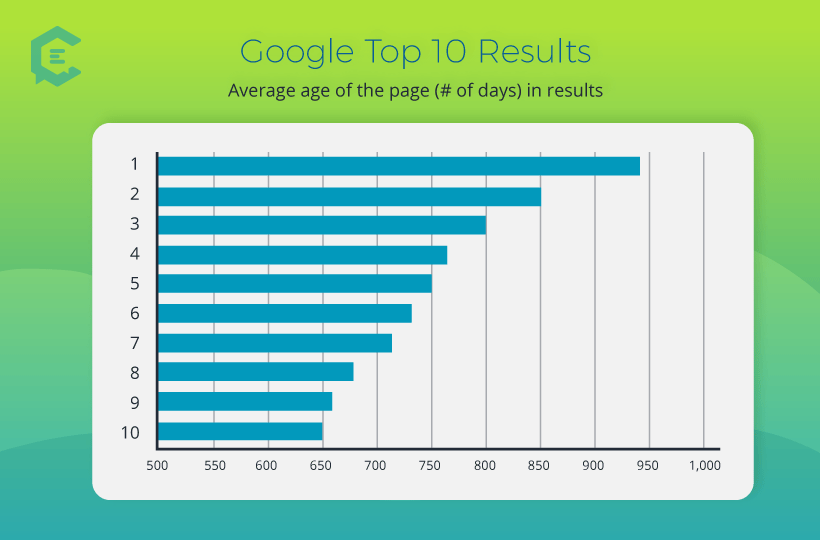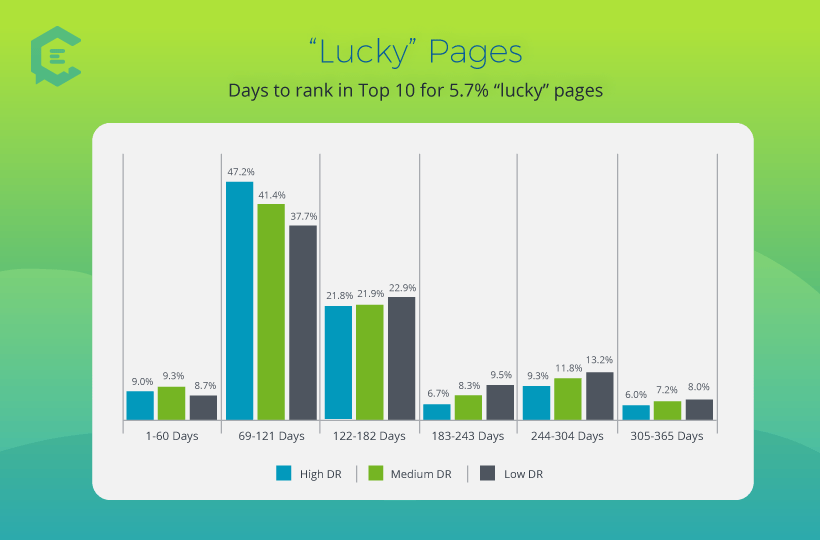“How long will it take for my site to show up on Google?” is a question I get regularly from clients and students.
For clients, I occasionally build websites and help with SEO-related tasks and one of the leading reasons these clients want a website is to garner free, organic traffic from Google. I also teach a Web Business Creation class for Brigham Young University – Idaho campus to around 40 new students each semester. Each of them is tasked with building a site and trying to get traffic to the site. Because I teach them about SEO in the course, they always ask me why I have them purchase traffic (i.e., through Google Ads) when they could just get it for free. I then explain to them the true nature of SEO — that it is a long play game that can’t be won overnight, or even over the course of a 4-month-long semester.
So, just how long does it take to get a website ranked on Google and Bing?
To answer that question I’ve talked with several SEO experts, evaluated opinions of other online experts, and I’ve scoured the web pulling together data that might also help set expectations as to how long it takes for a site to rank on the search engines. As you’ll see from the advice of these experts, there are a wide variety of opinions and thoughts on how long it takes for SEO to work, but they all agree on one point: It is a long play game.
SEO expert advice on how long it takes to rank on Google
I’ve directly interviewed several SEO experts and scoured through dozens of other high-authority experts online content. The next four excerpts do a sound job of representing the differing expert opinions I’ve come across.
1. For highly competitive terms it takes about a year.
Jeremy Knauff, CEO of marketing agency Spartan Media, explains in a Search Engine Journal article that it takes months (or years) to rank for highly competitive terms. He explains that some early results may be seen in as quickly as a few weeks, but that “moderately competitive topics might take months, while highly competitive phrases could even take one year or more!”
As an example of the highly competitive “marketing company” term he was working on, it took them “about a year of consistent work to achieve that [ranking].”
2. Think in terms of months and years, not days and weeks.
Speaking on the importance of being patient, Nate Nead, the CEO of the SEO Company, explains that SEO-rank-seeking marketers should be thinking in terms of months and years, and not days or weeks. “Gone are the days of knee-jerk website tweaks for rapid traffic spikes and quick SEO rankings gains. Nowadays, search engines understand quality sites rarely display the ‘flash-in-the-pan’ characteristics of many would-be successes of the bygone dot-com era. Today’s SEO long game is exactly that: long. The length of time it takes your site to rank is now based on hundreds of weighted factors including — but certainly not limited to — backlinks, domain trust, quality on-site content, keyword competition, click-through rates, bounce rates, search volume and time.
“When it comes to SEO, a good friend of mine says it best, ‘The best time to plant a tree was 20 years ago. The second best time is today.’ Planting your SEO roots in today’s marketing world is often quite literally a labor of love. In a game that is measured in months and years, not days and weeks, most sites fail to achieve their potential not because they lack potential, but because they lack the patience to keep at the SEO grind, year after painstaking year. ”
3. Yes, it takes 4 to 12 months.
While Google keeps its ranking algorithm close to the chest, every once in a while you’ll come across a tidbit of information from them that helps us see into its inner workings. In the below YouTube video, from Google Webmasters, we are told it takes 4 to 12 months to rank. Maile Ohye, a previous Developer Programs Tech Lead for the Google Webmasters team, shares “in most cases an SEO needs four months to a year to help your business first implement improvements and then see potential benefit.”
4. SEO should always be a long-term strategy.
Online marketing and SEO expert for Young Living Essential Oils, Eli Adams, shared his thoughts on the likely hundreds of different triggers that go into play in Google’s ranking algorithm. “The major triggers that most SEO’s agree upon are website age, internal and external links, website flow and architecture, industry and keyword difficulty, site speed, mobile usability, and basic on-page optimization.”
He went on to explain that if one controls for the above-mentioned triggers, holding them equal, then you would likely see the following timelines for your site to start ranking well, dependent upon the age of your website:
- A brand new website: If you’re adding unique, well thought out content weekly, you should start to see tangible results within 35 to 45 weeks from the day each content piece is posted.
- A 12 month+ old website: A site that already has some good content and has been around for at least 12 months should start seeing results within 25 to 35 weeks.
- A well established website: A site that has been around for years, and is tied to a large company, could start seeing decent results within 15 to 25 weeks.
Eli further explained that “this doesn’t mean you won’t see results coming in sooner. It’s just at these benchmark timelines where I’ve started to see the momentum really start to pick up. This is where the so-called hockey stick statistics start to happen. That being said, every site is different. SEO should always be a long-term strategy.”
The data behind the time to successful SEO ranking
After looking through data compiled by numerous marketing agencies, SEO tool providers and industry experts, I found that the backlink tracking service, Ahrefs, which I earlier reviewed in this Ahrefs vs Majestic comparison article, had the most thorough data-based explanation of how long it takes to successfully rank your site.
From Ahrefs’ findings, we see that the higher ranked pages, on average, were published earlier than lesser ranked pages. For example, the average #1 position ranked page has been published for almost 950 days, while the #10 position ranked page has been published for 650 days. Their findings also illustrated that only 22% of the pages that were ranking in the top 10 had been created in the last year, lending further credibility to the “it takes years sometimes” claims of our expert opinions.

Further analysis from Ahrefs showed that only 5.7% of pages ranked in the top 10 within a year of being published, for at least one keyword. When they zoomed in on that 5.7% of ranked pages, they saw that it took most of those particular pages anywhere from 2 to 6 months to rank in the top ten. While this may seem like an omen of good news for SEOs looking for quick ranking performance times, it is important to remember that the 2 to 6 month prime timeframe indicated in this data is only for the 5.7% of pages that actually made it to the top 10 rankings within a year.

Be patient and focus on quality.
Most of the expert sources I either talked with or found online reiterated that marketers and business owners need to be patient and focus on producing high-quality content that builds trust among consumers. If the content you’re creating is good for the consumers, it will likely trigger the right elements in Google’s search ranking algorithm and help increase the chance that your content will become top ranked.
Also see ClearVoice’s post on Conductor about how to optimize blog post length and refresh rates on pillar content, to boost long-term SEO and content value.






